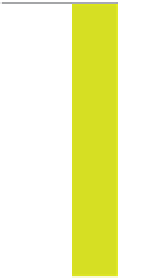Geology Reference
In-Depth Information
Figure 8.12
Sheeted dyke complex from the Cyprus ophiolite.
The top of the layered sequence is marked by a decreasing proportion of
coarse-grained rocks and the appearance of medium- to fine-grained dyke rocks
trending approximately at right angles to the layering below. Higher in the ophi-
olite sequence, these dykes rapidly become a
sheeted complex
, in which almost
all the outcrop may be occupied by interpenetrating circa 1 m thick sheets of
fine-grained gabbro (dolerite) or basalt (Figure 8.12). The sheeted complex of
dykes may be circa 1 km thick before it gives way upwards to a series of pillow
lavas, typically circa 0.5 km thick, though feeder dykes may continue through
much of the lava sequence. Basalts predominate in the pillow lava sequence
(for example, Figure 8.13) though more mafic picrites or more acid andesites
and dacites may occur. Thick non-pillowed flows and occasional sills may also
be found in the sequence, as well as fragmented pillows, hyaloclastites and
more isolated dykes (for example, Figure 8.13). The uppermost lavas may be
intercalated with various types of deep-sea sediments, ranging through cherts,
shales and mudstones to occasional red-brown ferromanganoan hydroxide sedi-
ments, known as
umbers
. A thin sequence comprising purely sedimentary rocks
is sometimes preserved at the top of an ophiolite body.
Finally, the top 3 - 4 km of an ophiolite sequence is likely to show the effects
of hydrothermal metamorphism due to the penetration of magmatically-heated
















